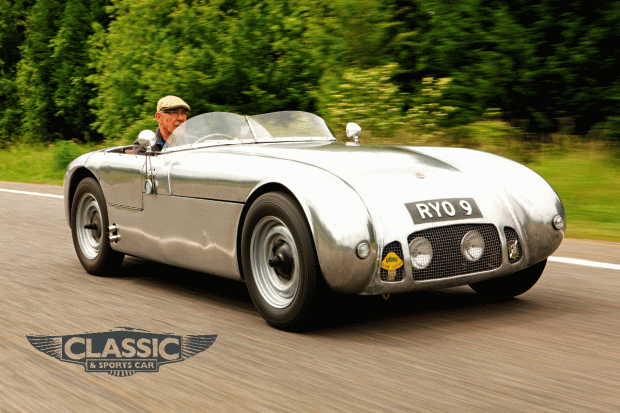
As befitted a surgeon at Paddington General Hospital, Dr John Richard Kenyon – Ian to friends and family – appears to have been a methodical man. In 1953, he decided to have a sports car tailor-made to his requirements, something more modern than the 1933 Frazer Nash he then owned. The motoring magazines were carefully read. A description of the HRG twin-cam conversion of the Singer engine was snipped out; so too was an article on Bertone’s BAT 5 streamliner. Catalogues and price-lists came from British specialist makers.
Buckler sent details of its tubular frames, independent front suspension and close-ratio gearboxes. Kenyon pencilled in calculations based on a Ford Ten engine, costed for different Buckler models. Information on Aquaplane tuning gear and Amal carbs was studied. Various units were compared: a Ford Ten in standard, tuned and blown forms, plus the MG XPAG as a standard 1250 and in 85bhp, 1467cc guise. Alongside, he noted figures for the HRG twin-cam and – as a yardstick – a competition-tune 1500cc Porsche flat-four.
By September 1953, Kenyon had requested MG’s Special Tuning booklet from Abingdon and made contact with Colin Chapman at his newly formed Lotus firm. His mind was made up: his car would be based on the Lotus Six, which had entered production in late 1952, and it would have a tuned MG engine. It would, however, be more modern than the Lotus in its appearance, with an all-enveloping body to his own design. Not only that, but it would have a de Dion rear axle, again to a configuration laid down by Kenyon.

Lotus Sixes were bodied by Williams & Pritchard, so the construction of the car was brokered by ‘ACBC’ himself, Chapman quoting a price of £160 for panelling the Six’s tubular frame – £100 more than the standard body – with additional materials taking the total cost of the body to £184 10s, on top of the £110 charged for the spaceframe. In March ’54 Kenyon provided drawings to HWM for the construction of the de Dion rear, for which HWM’s John Heath had quoted £100-125 – a fair slice of the calculated £827 total cost. After correspondence with Harold Lester, Kenyon instead plumped for Laystall to do the engine work, the over-bored 1467cc unit featuring a balanced Laystall crank and flywheel, with a Laystall-Lucas cylinder head. This was pretty state-of-the-art stuff for the XPAG engine.








